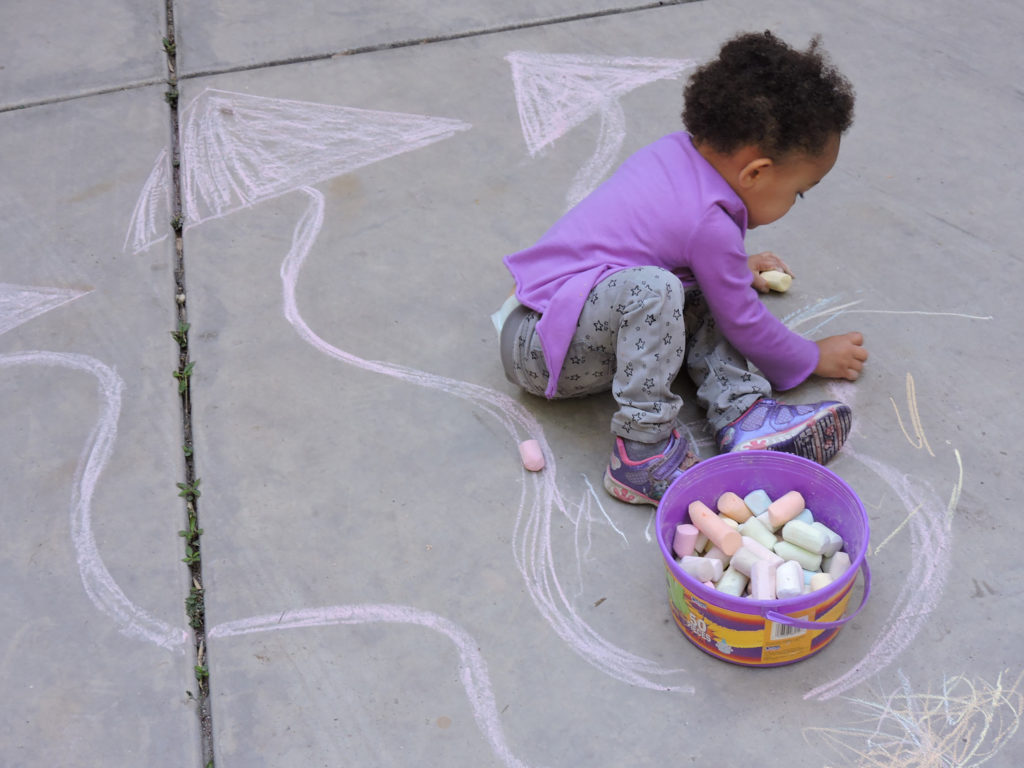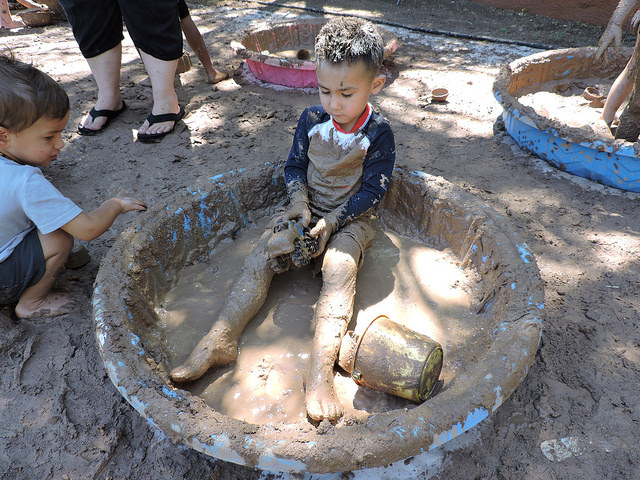Nature Play The Day Away!
Close your eyes…
Think of one of your favorite memories as a child.
Does it involve being outside? How do you feel when you think of this memory and what feelings did you have as a child in this memory? For many people, when asked these questions, the response usually involves an outdoors experience with friends and/or family with lots of happiness, excitement, adventure, and satisfaction. My memory is when my brother and I used the swing set to create a mud cookie factory. We would grab a handful of mud, roll it into a ball, roll it down the slide, smoosh it and lay it out to dry in the sun. Then we would try to sell them to passers-by; no one would ever buy one, but it was fun just the same. Many of the children growing up today will not have similar memories to recall when they are adults. Their memories and experiences are consumed by digital media. Today’s youth spend an average of 4 minutes in unstructured play outside per day, as compared to over 7 hours of time spent on media devices: cell phones, tables, video games, television, computers, mp3 players, and more. The CDC and Academy of Pediatrics recommend 30 to 60 minutes per day of unstructured play outdoors and less than 2 hours total of screen time. It is estimated that the average 2-year-old child watches over 2 hours of TV per day! Why has play changed?
Why has play changed?
As mentioned before, media has increased significantly over the past 30 years. Children have less time to play outside due to increased homework loads, lengthened school days, increased participation in extracurricular activities, and chores. Parental fears have grown significantly as well; children could be abducted or get injured while playing outside and lawsuits have created playgrounds that are unenticing for children and adults alike. Lastly, natural spaces are getting farther away and harder to find as human population continues to increase.
Is it really necessary for children to play outside? YES! Children are encouraged to play outside for a variety of reasons and benefits. Studies have shown that children who have unstructured play time in natural settings are more confident and have better self-esteem. They are more focused and symptoms of ADHD are reduced. Children have better socialization and problem solving skills, and are more creative when they are allowed to play outside. There is also a hypothesis that children who play outside have better immune systems because of their exposure to more surfaces. The Zoo’s mission is: “to encourage commitment to the conservation of biological diversity and to provide educational and fun experiences for visitors of all ages.” Providing nature play experiences is important to the Zoo as a conservation organization because unstructured childhood play in natural spaces is an important factor in developing life-long conservation values and conservative behaviors. Children who play outside become more connected to the environment, and therefore are more likely to want to protect it when they become adults. The Zoo has installed a small sandbox by the Conservation Learning Center. During Nature Play days the sandbox is opened up and educators set out items for play including bamboo sticks, tree cross-sections, splash tables, rocks, twigs, and of course my childhood favorite, MUD! The Zoo is excited to provide children with loving memories of playing outside and fostering a love of nature in all visitors, hopefully for many years to come. To find out when the Zoo’s next series of Nature Play events are taking place, or to join the Nature Club click here.
The Zoo’s mission is: “to encourage commitment to the conservation of biological diversity and to provide educational and fun experiences for visitors of all ages.” Providing nature play experiences is important to the Zoo as a conservation organization because unstructured childhood play in natural spaces is an important factor in developing life-long conservation values and conservative behaviors. Children who play outside become more connected to the environment, and therefore are more likely to want to protect it when they become adults. The Zoo has installed a small sandbox by the Conservation Learning Center. During Nature Play days the sandbox is opened up and educators set out items for play including bamboo sticks, tree cross-sections, splash tables, rocks, twigs, and of course my childhood favorite, MUD! The Zoo is excited to provide children with loving memories of playing outside and fostering a love of nature in all visitors, hopefully for many years to come. To find out when the Zoo’s next series of Nature Play events are taking place, or to join the Nature Club click here.
Written By: Andrea Contreras
